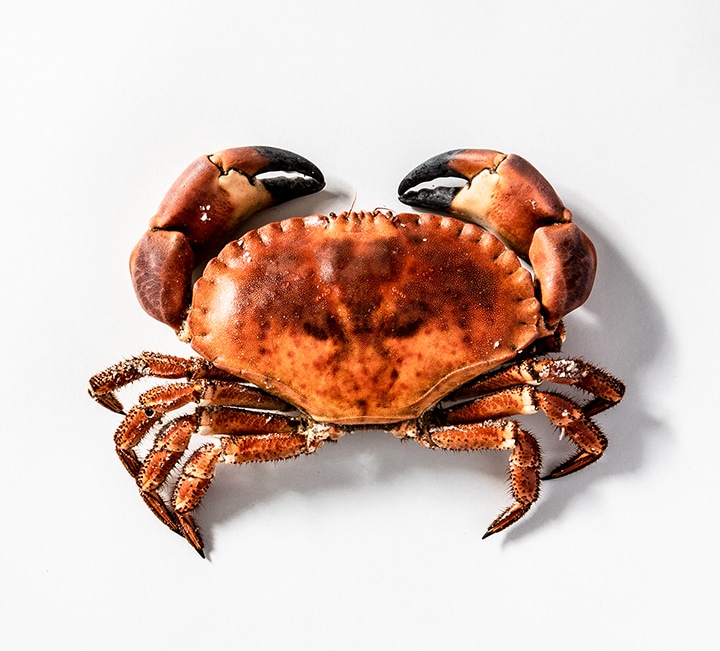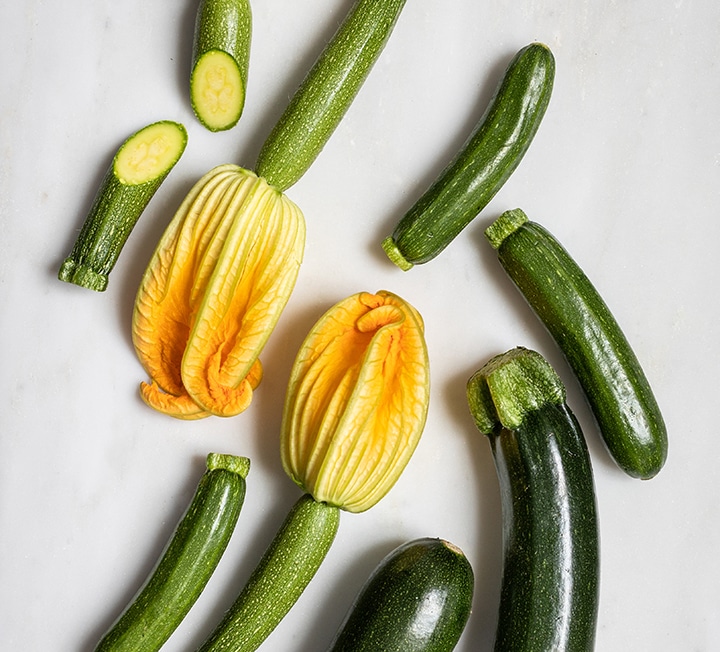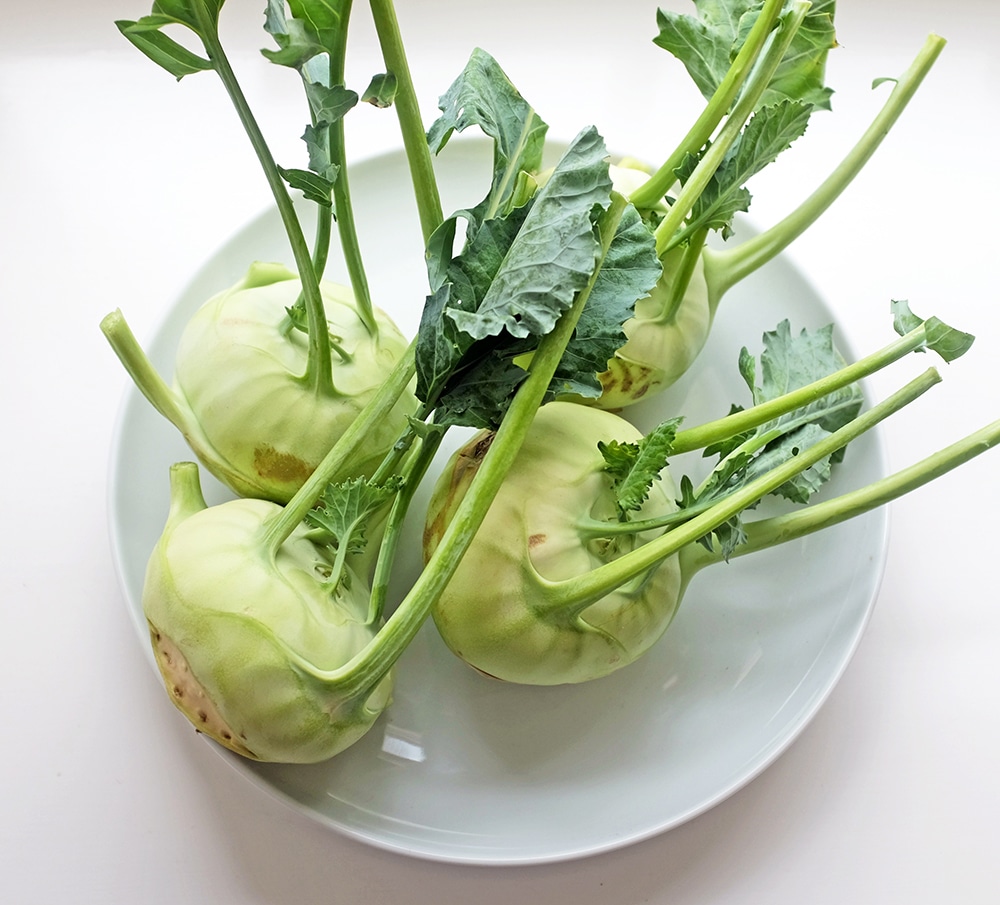Hot tips
Bee Wilson explores the life-changing revelation that, in defiance of the old consensus, asparagus can be cooked using methods other than boiling
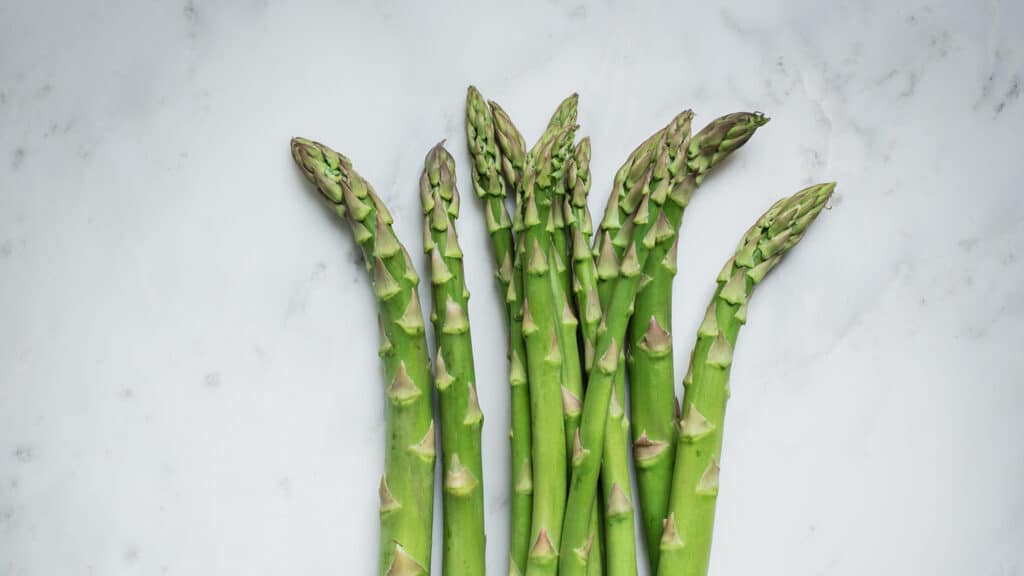

“OVER THE PAST DECADE, CHEFS AND COOKERY WRITERS HAVE THROWN OUT THE ASPARAGUS RULE BOOK”
Words: Bee Wilson / Images: Regula Ysewijn
“What if you do not possess an asparagus boiler?” asked Jane Grigson in her Vegetable Book. It is not a dilemma that troubles many cooks now. But back in 1978, when Grigson’s book was first published, everyone knew that there was only one way to cook asparagus: boiled, standing in a bundle. Not owning an asparagus boiler could make this tricky task even trickier.
An asparagus boiler – for the uninitiated – consists of a tall cylindrical lidded pan with an inner basket. The bundle of asparagus is put in the basket, stalks down, with a few inches of salted water. The idea is that in the time it takes every last bit of stringiness to be boiled out of the stalks at the bottom, the tips will steam to tender-crisp. To readers who did not possess this elaborate vessel, Grigson suggested improvising an equivalent using some other tall saucepan and a “wire blanching basket”. As for those who had no wire blanching basket, she recommended tying the asparagus in a bundle in a normal saucepan and improvising a domed lid of foil for the tips. The one thing Grigson did not suggest was cooking this sublime spring vegetable by any other method, because back then boiled asparagus was seemingly the only option.
Thinking about asparagus, it struck me that modern cooks express our love of ingredients very differently from cooks of yesteryear. In the past, asparagus-lovers worshipped this expensive vegetable by cooking it in one way only, which almost seemed to be demanded by the anatomy of the plant. To respect asparagus was to know that it needed to be kept in a bundle and boiled upright, with obsessive care for not overcooking the tips. By contrast, cooks now celebrate the all-too-brief season of these green vibrant spears by cooking them in as many different ways as possible. We griddle asparagus and we braise it; we shred it and eat it raw; we toss it with pasta and noodles; we use it to add spring freshness to green minestrone or risotto.
Cooks used to signal that an ingredient was special by cooking and serving it in one particular way and often in a single designated vessel. Turbot, for example, was poached in court-bouillon in its own special turbotiere. Hot salmon called for hollandaise and cold salmon for mayonnaise. And asparagus, prince of vegetables, demanded to be gently scraped to remove any tough outer stalks, then cooked in water.
There are 19 asparagus recipes in Haute Cuisine by Jean Conil, first published in 1953, and except for one recipe for green asparagus soufflé, all of the others consist of boiling it and serving hot or cold with a sauce. Many of these old haute cuisine ideas for boiled asparagus are in fact still lovely. Conil’s suggestions for asparagus sauces include ‘Maltaise’, a tangy hollandaise made with blood orange instead of lemon and a simple fresh cream sauce sprinkled with chopped chives and chervil. I am a big fan of Conil’s ‘asperges Espagnole’: hot asparagus served with poached eggs and vinaigrette.
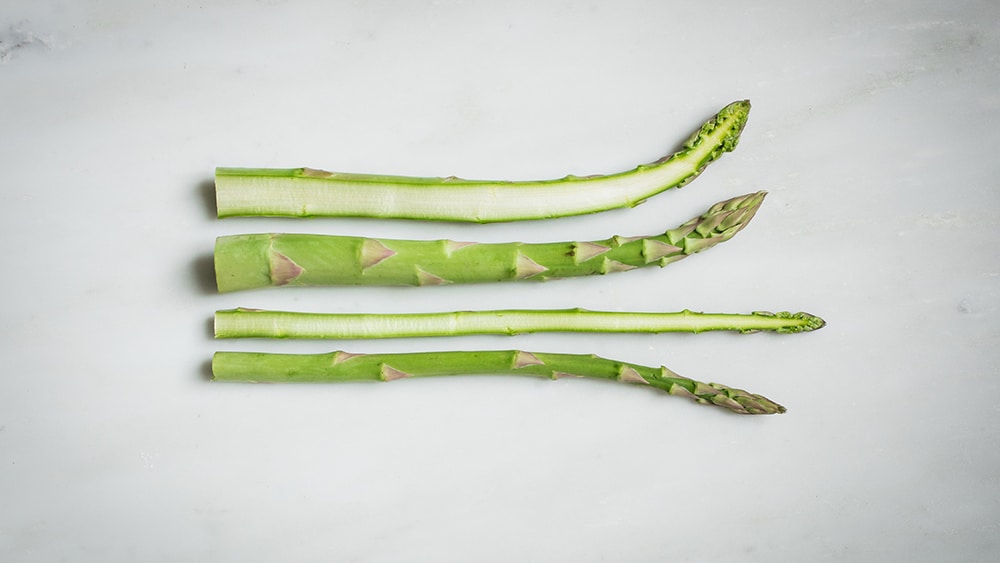
When I started cooking in the 1990s, I was firmly of the boiled asparagus school. Someone gave me an asparagus boiler for a wedding present and I was determined to master making proper bundles, like a Dutch still life. I knew that some recipe writers had started blackening asparagus on a char-grill, but the first few times I tried it this way, it tasted harsh and burned and half-raw, a waste of those expensive spears. So, I persevered with my asparagus boiler, even though I found the process frustratingly hit and miss. As Jane Grigson said, depending on the size and quality of the asparagus the timing could vary “from 15 minutes to 45”, which made it impossible to plan supper.
The recipe that changed the way I thought about asparagus was River Cafe penne with asparagus carbonara, which I first read about in 2000. This was a carbonara, but with spears of asparagus cut on the diagonal in place of the pancetta. The thing that startled me was the wondrous economy of the method. While the pasta boiled until al dente for nine minutes, you cooked the asparagus in a separate pan. The stalks were added first, then after two minutes, the tips, which cooked for a further four minutes. The blanched asparagus is tossed with pasta, egg yolks, parmesan, butter and thyme to make a richly spring-like dish: green and golden.
The first time I made it, I couldn’t believe that the asparagus had come out so perfectly with so little effort. I never used my asparagus boiler again, realising that I could boil the spears unbundled in a big pan for five minutes, with none of the fuss and better results.
Over the past decade, chefs and cookery writers have developed a much more experimental and playful approach to asparagus. We have thrown out the asparagus rule book. Take the controversial question of snapping versus slicing. Many cooks used to swear by the tradition of snapping each stalk to separate the edible top from the inedibly woody bottom. But in 2009, food writer Harold McGee experimented by snapping 130 spears and found that the snapping method was far less reliable than simply looking at the spears and cutting them at what seems to be the right point. Don’t discard the stalks. Much of the bottom part is still edible too, notes McGee, if you slice it very thinly and add it to a soup or stir-fry.
It was Yotam Ottolenghi who convinced me that chargrilled asparagus could make a welcome change from plain-boiled. Freshly harvested asparagus contains a lot of natural sugar and charring it accentuates both its sweetness and its umami flavours. Ottolenghi’s first cookbook contained a recipe for chargrilled asparagus, courgette and halloumi cheese salad. It was a bit of a palaver to make: the asparagus was blanched before it was charred with thin slices of courgette and anointed with garlicky basil oil. But the firm, bright spears took on a savoury depth that was a revelation. I have since discovered that I like charred asparagus even more if it is sliced up, tossed with salt and oil and browned for between five and 10 minutes under a very hot grill, with lemon zest added at the end.
If you don’t try different things out, you will never know what you’re missing. As J Kenji Lopez-Alt of The Food Lab writes, we should embrace asparagus “in all its forms from raw and crunchy to braised, olive-green and totally tender”. The best of all ways to cook asparagus, I am now convinced, is neither boiled nor grilled, but braised. By braising, I mean browning the asparagus in a single layer in a paella pan or similar before cooking with butter and a splash of water or stock until the liquid emulsifies to a glossy sauce, which takes less than 10 minutes. Braised asparagus offers both the browned intensity of charred asparagus and the delicacy of boiled.
My introduction to braised asparagus was Lopez-Alt’s excellent recipe on the Serious Eats website but I also recommend the Patricia Wells version on the Food 52 website, where the asparagus is flavoured, surprisingly, with rosemary and bay. With middle age, asparagus season has started making me feel wistful. It lasts such a short time, and who can say how many more asparagus seasons remain? This is yet another reason to expand your horizons beyond boiled asparagus. Not possessing an asparagus boiler is no loss. The real pity would be to miss out on squeezing every ounce of asparagus-joy from the season before it is gone.
